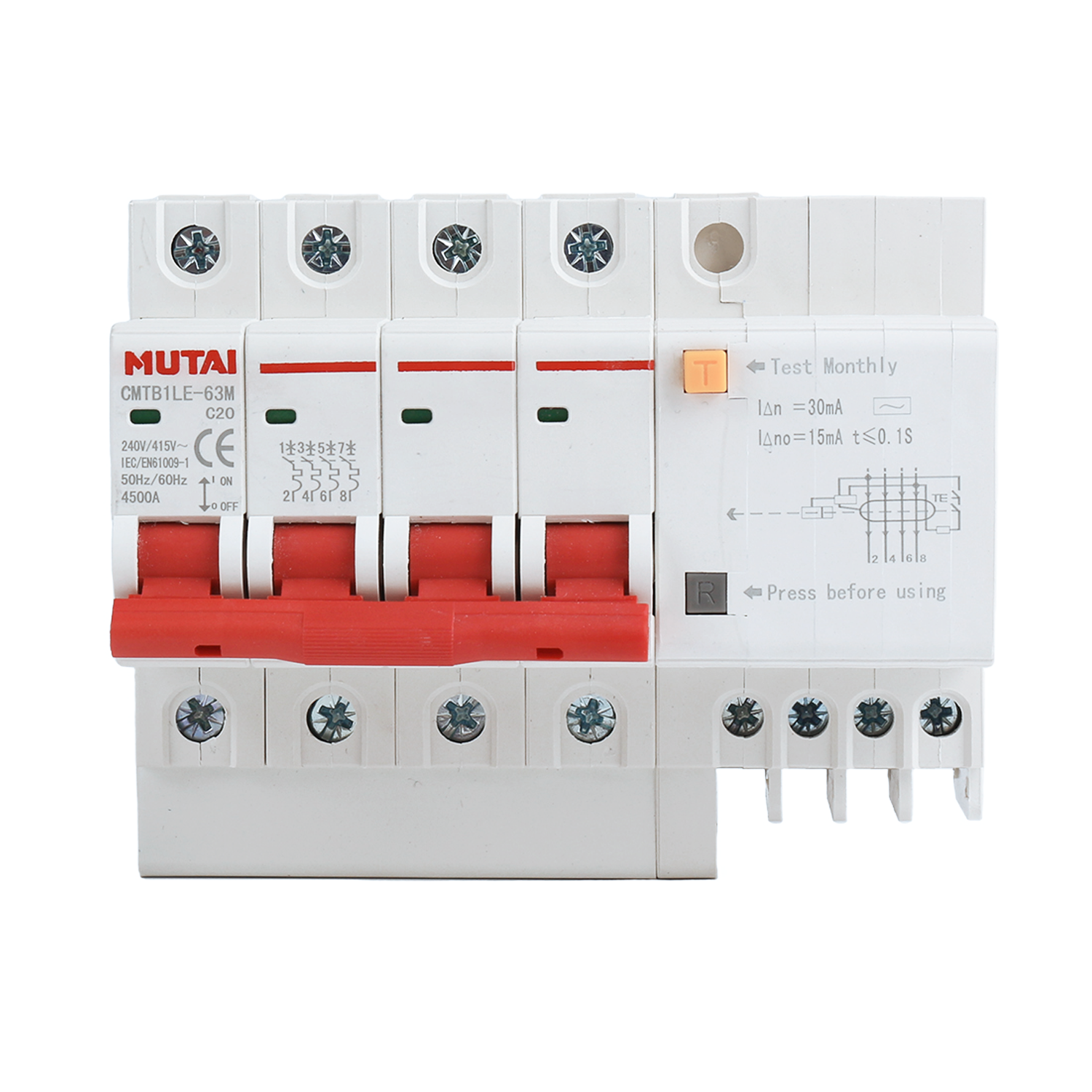In modern low-voltage electrical systems, safety and reliability are paramount. The Residual Current Operated Circuit Breaker (RCBO) is a critical protective device designed to prevent electrical hazards such as electric shock and fires caused by electrical faults. By combining overload, short-circuit, and residual current protection, the RCBO offers comprehensive safety for various applications. In this post, we’ll explore the key features and technical specifications of RCBO and their role in safeguarding electrical systems.
Core Functionality of RCBO
RCBO integrate multiple protection mechanisms in one device. Their primary function is to detect overloads, short circuits, or residual currents (leakage currents) and instantly disconnect the power supply to prevent potential harm to people and property. This makes RCBOs highly versatile, as they are applicable in a wide range of settings, from residential installations to commercial and industrial environments.
Key Technical Specifications and Features
1. Rated Current Range: RCBOs come in a variety of rated current options to suit different applications. Common models like the CMTB1LE-32 and CMTB1LE-63 cover a current range from 3A to 63A. Specifically, the CMTB1LE-32 is available in ratings of 3A, 6A, 10A, 16A, 20A, 25A, and 32A, making it ideal for light to medium load scenarios. The CMTB1LE-63, on the other hand, is designed for higher loads, with current ratings of 40A, 50A, and 63A, perfect for higher-power applications.
2. Short-Circuit Breaking Capacity: RCBO are engineered to safely interrupt the flow of current in the event of a short circuit. The CMTB1LE-32 model has a breaking capacity of 6000A, which ensures rapid disconnection when excessive current flows. The CMTB1LE-63 provides different breaking capacities depending on the current rating: 6000A at 40A and 4500A at 50A and 63A. These robust capacities make RCBO reliable in preventing electrical equipment damage during fault conditions.
3. Pole Configurations: RCBO offer flexibility with pole configurations, including 1P+N, 2P, 3P+N, and 4P options, making them adaptable for both single-phase and three-phase electrical systems. This versatility allows for a broad range of applications while ensuring that circuits are protected from overload, short circuits, and residual currents.
4. Types of Residual Current Protection: There are two types of residual current protection provided by RCBO—Type C and Type D, designed for rated currents between 3A and 63A. Type C is suitable for standard loads, while Type D is designed for high-inductive or capacitive loads, such as motors or industrial equipment. This allows the RCBO to handle a variety of load types effectively, preventing system overloads or damage.
5. Residual Current Sensitivity: RCBOs offer different levels of sensitivity to residual current, which is the key feature for leakage protection. The rated residual operating current (IΔn) typically comes in options like 30mA, 50mA, and 100mA, ensuring the device can detect leakage currents and disconnect the power if needed. Additionally, the rated residual non-operating current (IΔno) options of 15mA, 25mA, and 50mA provide further precision in preventing unwanted tripping while maintaining safety.
6. Rapid Response Time: When an electrical fault is detected, RCBOs react almost instantaneously, with a tripping time of less than 0.1 seconds. This swift response minimizes the risk of serious damage or accidents, offering reliable protection across different types of electrical systems.
RCBO Applications
RCBOs are widely used in residential, commercial, and industrial low-voltage distribution systems. Their integrated protection features make them indispensable for modern electrical environments, where diverse and complex loads are common.
For residential applications, RCBO ensure that household electrical appliances are safeguarded from leakage currents, preventing electric shock hazards. In commercial settings, RCBO protect critical equipment and infrastructure from electrical faults, ensuring business continuity. In industrial applications, especially where equipment like motors and heavy machinery are used, Type D RCBO provide superior protection against the high inrush currents that can occur with such inductive loads.
Conclusion
The Residual Current Operated Circuit Breaker (RCBO) is a key protective component in modern electrical systems. By integrating overload, short-circuit, and leakage current protection, RCBO offer reliable, all-around safety. With features like high breaking capacity, sensitive residual current detection, and fast response times, RCBOs ensure the stability and safety of electrical systems in homes, businesses, and industrial settings alike. Choosing the right RCBO model ensures that electrical systems operate efficiently and safely, protecting both users and equipment.
Post time: Nov-13-2024
 Phone: +86 18066376807
Phone: +86 18066376807 E-mail: ellen.zheng@mutaiele.com
E-mail: ellen.zheng@mutaiele.com








